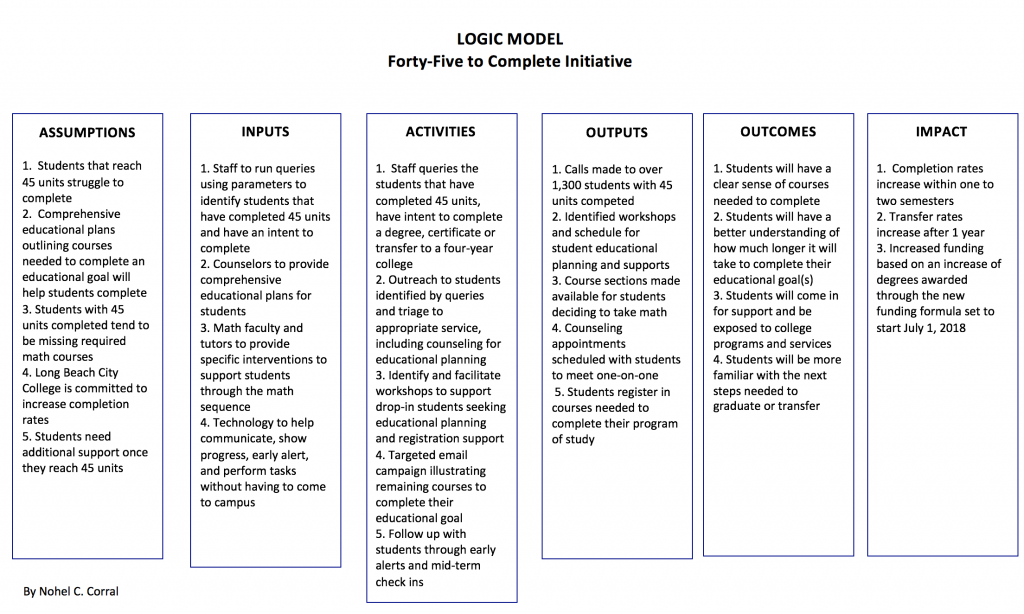The logic model featured in Figure 1 below illustrates an initiative to increase completion rates among students who have completed 45 units at Long Beach City College. In partnership with the Office of Institutional Effectiveness and Research, approximately 1,300 students have been identified with taking 45 units, having no comprehensive educational plan outlining courses needed to complete degree, certificate, or transfer, and are currently enrolled at the college.
Key Elements
This logic model features six main components of (1) assumptions, (2) inputs, (3) activities, (4) outputs, (5) outcomes, and (6) impacts. In each element, three to five criteria are identified describing the planned work through to the intended results.
Intended Outputs and Outcomes
The outputs of this logic model are the direct actions and work that is done to facilitate this initiative. For example, making phone calls, reaching out to students, facilitating workshops, and creating educational plans are all examples of outputs that are recommended to be included in this model. Alternatively, outcomes include increasing awareness of completion requirements for students, enhance student understanding of time to completion, and increasing the number of students being exposed to programs and services on campus. These are behaviors we would like to see in our students through this initiative.
Figure 1

Hi Nohel.
Having volunteered to support this effort via the in-person workshops, it was interesting to read your logic model. Not only was it nice to work directly with students for a change, but in speaking with them one-on-one, I learned about the varying levels of “college knowledge” and variety of needs of each of the students. I was also reminded of how appreciative most students are of such attention. Though it is rather labor-intensive, I am confident that our efforts – for the 50 or so students we worked with that day – will pay off.
Thanks for sharing your experience, Heidi. I agree, the personal touch speaks volumes in supporting our students and them feeling connected and cared for. Thank you for your help and support of our students!
Best,
Nohel